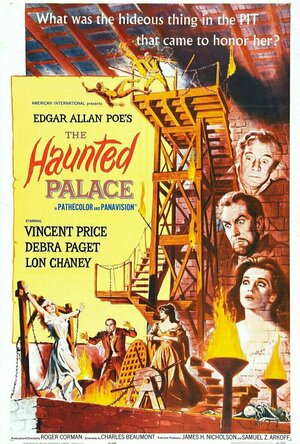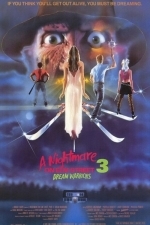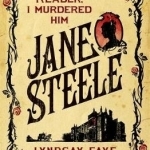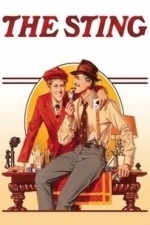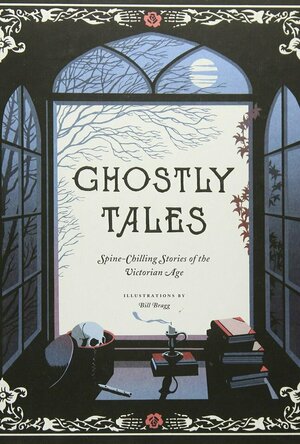Search
Search results
Matthew Krueger (10051 KP) rated The Haunted Palace (1963) in Movies
Dec 15, 2020
Something Wicked
The Haunted Palace- is anethor Poe, Price and Corrman film. But Although marketed as "Edgar Allan Poe's The Haunted Palace", the film actually derives its plot from The Case of Charles Dexter Ward, a novella by H. P. Lovecraft. The title The Haunted Palace is borrowed from the 6-stanza poem by Poe, published in 1839 (which was later incorporated into Poe's horror short story "The Fall of the House of Usher"), and the film uses eight lines from the poem within the framing of the story. So in reality its a H.P. Lovecraft story and a Poe title.
The plot: Condemned warlock Joseph Curwen (Vincent Price) curses a New England village just before being burned alive. More than a century later, Curwen's kindly great-great grandson Charles Ward (also Price) arrives in town and moves into Curwen's old mansion. Caretaker Simon Orne (Lon Chaney Jr.) helps Charles and his wife Ann (Debra Paget) adjust to their new home. The ancient curse, however, takes hold of Joseph, awakening inside him a long-dormant evil passed on through blood.
Its a decent film.
The plot: Condemned warlock Joseph Curwen (Vincent Price) curses a New England village just before being burned alive. More than a century later, Curwen's kindly great-great grandson Charles Ward (also Price) arrives in town and moves into Curwen's old mansion. Caretaker Simon Orne (Lon Chaney Jr.) helps Charles and his wife Ann (Debra Paget) adjust to their new home. The ancient curse, however, takes hold of Joseph, awakening inside him a long-dormant evil passed on through blood.
Its a decent film.
Matthew Krueger (10051 KP) rated A Nightmare on Elm Street 3: Dream Warriors (1987) in Movies
Jul 3, 2020 (Updated Jul 3, 2020)
The introduction of funny Freddy (2 more)
Welcome to primetime, bitch!
Death Scene's
Welcome to primetime, bitch!
Contains spoilers, click to show
A Nightmare on Elm Street 3: Dream Warriors- is a excellent movie, coming off the disappointed Freedy's Revenge, Dream Warriors goes back to the oringal formula, Scary, twisted, dramatic and excellent deaths. Dream Warriors adds more like taking place psychiatric ward, a excellent line that was on the spot, "Welcome to primetime, bitch!". Also Heather Langenkamp and John Saxton return. Also you new charcters that will return in later sequels like Kristen, Kincaid and Joey. A great cast of charcters, a great story and also introduces Freddy's mom and her back story and adds more to Freddy's back story.
Lets talk more: production and deaths.
Production:
Craven's very first concept for the film was to have Freddy Krueger invade the real world: Krueger would haunt the actors filming a new Nightmare on Elm Street sequel. New Line Cinema rejected the metacinematic idea, but years later, Craven's concept was brought to the screen in Wes Craven's New Nightmare.
Before it was decided what script would be used for the film's story, both John Saxon and Robert Englund wrote their own scripts for a third Nightmare film; in Saxon's script called How the Nightmare on Elm Street All Began, which would have been a prequel story, Freddy would ultimately turn out to have been innocent, or at least set up for the murders by Charles Manson, who along with his followers would have been the main culprit of the murders; Freddy would be forced by the mob of angry parents to make a confession of the crimes, which would enrage them further. After they lynch Freddy, he comes back to avenge his wrongful death by targeting the parent's children.
In Englund's treatment called Freddy's Funhouse, the protagonist would have been Tina Gray's older sister, who would have been in college by the time Tina was murdered, and ends up coming back to Springwood to investigate how she died. In the script, Freddy had claimed the 1428 Elm Street house for his own in the dreamworld, setting up booby traps like Nancy did against him.
The death scenes: I love the death scene's in this film. Their are both memorable and excellent and probley my favorite out of all the franchise. You have Phillip's death: Veins pulled out/manipulated into falling off high ledge by Krueger, Jennifer's death: Head smashed into TV screen, Taryn death: Leg slashed with bladed glove, massive amounts of heroin injected into veins and Freddy saying "let's get high", William's death: Lifted, chest impaled with bladed glove and Freddy saying " Sorry kid, but I don't believe in fairy tales", Donald's death: Thrown/impaled through back on car's tail fin by a skeleton verison of krueger and Nancy's death: Stomach impaled twice/gutted with bladed glove/bled out, in dream world cause she sees her dad but its krueger. Also you have the Freddy worm that attacks Kristen.
The plot: During a hallucinatory incident, young Kristen Parker (Patricia Arquette) has her wrists slashed by dream-stalking monster Freddy Krueger (Robert Englund). Her mother, mistaking the wounds for a suicide attempt, sends Kristen to a psychiatric ward, where she joins a group of similarly troubled teens. One of the doctors there is Nancy Thompson (Heather Langenkamp), who had battled Freddy some years before. Nancy senses a potential in Kristen to rid the world of Freddy once and for all.
Dream Warriors: is a return to the oringal formula, and adds more. Adds memorable lines, better deaths, intoduction of comedy side of Freddy and above all a excellent movie.
The ending is sad cause Nancy and John doe die by freedy but it ends their story for now and starts a new story with Kristen, Kincaid and Joey. Its a percent, but sad ending. Ending the oringal maim charcters arc/story, while senting up a new trio of charcters.
Also you can't forget about that excellent theme song, "Dream Warrors" by Dokken.
Lets talk more: production and deaths.
Production:
Craven's very first concept for the film was to have Freddy Krueger invade the real world: Krueger would haunt the actors filming a new Nightmare on Elm Street sequel. New Line Cinema rejected the metacinematic idea, but years later, Craven's concept was brought to the screen in Wes Craven's New Nightmare.
Before it was decided what script would be used for the film's story, both John Saxon and Robert Englund wrote their own scripts for a third Nightmare film; in Saxon's script called How the Nightmare on Elm Street All Began, which would have been a prequel story, Freddy would ultimately turn out to have been innocent, or at least set up for the murders by Charles Manson, who along with his followers would have been the main culprit of the murders; Freddy would be forced by the mob of angry parents to make a confession of the crimes, which would enrage them further. After they lynch Freddy, he comes back to avenge his wrongful death by targeting the parent's children.
In Englund's treatment called Freddy's Funhouse, the protagonist would have been Tina Gray's older sister, who would have been in college by the time Tina was murdered, and ends up coming back to Springwood to investigate how she died. In the script, Freddy had claimed the 1428 Elm Street house for his own in the dreamworld, setting up booby traps like Nancy did against him.
The death scenes: I love the death scene's in this film. Their are both memorable and excellent and probley my favorite out of all the franchise. You have Phillip's death: Veins pulled out/manipulated into falling off high ledge by Krueger, Jennifer's death: Head smashed into TV screen, Taryn death: Leg slashed with bladed glove, massive amounts of heroin injected into veins and Freddy saying "let's get high", William's death: Lifted, chest impaled with bladed glove and Freddy saying " Sorry kid, but I don't believe in fairy tales", Donald's death: Thrown/impaled through back on car's tail fin by a skeleton verison of krueger and Nancy's death: Stomach impaled twice/gutted with bladed glove/bled out, in dream world cause she sees her dad but its krueger. Also you have the Freddy worm that attacks Kristen.
The plot: During a hallucinatory incident, young Kristen Parker (Patricia Arquette) has her wrists slashed by dream-stalking monster Freddy Krueger (Robert Englund). Her mother, mistaking the wounds for a suicide attempt, sends Kristen to a psychiatric ward, where she joins a group of similarly troubled teens. One of the doctors there is Nancy Thompson (Heather Langenkamp), who had battled Freddy some years before. Nancy senses a potential in Kristen to rid the world of Freddy once and for all.
Dream Warriors: is a return to the oringal formula, and adds more. Adds memorable lines, better deaths, intoduction of comedy side of Freddy and above all a excellent movie.
The ending is sad cause Nancy and John doe die by freedy but it ends their story for now and starts a new story with Kristen, Kincaid and Joey. Its a percent, but sad ending. Ending the oringal maim charcters arc/story, while senting up a new trio of charcters.
Also you can't forget about that excellent theme song, "Dream Warrors" by Dokken.
Hazel (1853 KP) rated Jane Steele in Books
May 24, 2017
Classic Retelling
This eBook was provided by the author in exchange for an honest review
“Reader, I murdered him.” Jane Steele is a gothic retelling of the renowned Jane Eyre written by the celebrated Charlotte Bronte. Crime writer, Lyndsay Faye, creates an entirely new story, whilst appropriating the skeletal structure of the original classic. However, Jane Steele is nothing like the Miss Eyre everyone is familiar with. She is far more headstrong and independent, and also a murderer.
Before readers are discouraged to hear that their beloved Jane is portrayed as a criminal, the murders that occur are more of a homicidal or self-defense nature, as opposed to premeditated serial killing. In fact the first death, occurring when she is a nine year old orphan, is not her fault at all, however it prompts Jane’s wealthy aunt to pack her off to boarding school, and thus the similarities with Jane Eyre commence.
Written in an autobiographical manner, Jane describes her years at the virulent school, where she and the other girls experience abuse at the hands of the ignoble schoolmaster. As readers will recall, Eyre’s life improves in her later school years, however Jane Steele’s education comes to a premature end, resulting in her fending for herself in 19th century London.
As the blurb indicates, Jane returns to the house she grew up in after the death of her aunt, affecting to be a governess for the current owner’s ward. Mr. Charles Thornfield, a bachelor, is Jane Steele’s version of Rochester, minus the wife in the attic. The contents of the cellar, on the other hand, are a different matter…
From a romantic point of view, all happens in a similar manner to Jane Eyre, however this is where the comparisons end. With concealed crimes and secrets, as well as an unsolved murder, the story becomes the thriller it initially proposed to be. The incisive Jane Steele takes matters into her own hands – figuratively and literally – as she determines to resolve the unanswered questions.
Although not written with the intent to be comical, the stark contrasts between original and retelling create humorous scenarios. The nature of the main character in comparison with the time frame, a period where women had very little rights, makes the narrative far more exciting and amusing than the earlier novel – although not necessarily better.
Lyndsay Faye maintains the atmosphere of the 1800s with her affinity for eloquent turns of phrase and choice of words. She is a prolific author full of wonderful ideas; her ability to create a new story out of a well-known classic is a formidable skill. What is admirable is they way in which Faye has made Jane Steele a novel in its own right, and not merely a rip-off of Bronte’s work.
The skillful composition and wording will likely be loved by all, its only downfall being the reaction of hardcore Jane Eyre fans. Those who wish for the classics to be left alone and not pulled apart by contemporary authors or film directors may adopt a negative attitude towards to publication of Jane Steele. On the other hand, many will absolutely love this gothic retelling, appreciate the similarities and enjoy the new twist to the storyline. Personally, I am with the latter group.
“Reader, I murdered him.” Jane Steele is a gothic retelling of the renowned Jane Eyre written by the celebrated Charlotte Bronte. Crime writer, Lyndsay Faye, creates an entirely new story, whilst appropriating the skeletal structure of the original classic. However, Jane Steele is nothing like the Miss Eyre everyone is familiar with. She is far more headstrong and independent, and also a murderer.
Before readers are discouraged to hear that their beloved Jane is portrayed as a criminal, the murders that occur are more of a homicidal or self-defense nature, as opposed to premeditated serial killing. In fact the first death, occurring when she is a nine year old orphan, is not her fault at all, however it prompts Jane’s wealthy aunt to pack her off to boarding school, and thus the similarities with Jane Eyre commence.
Written in an autobiographical manner, Jane describes her years at the virulent school, where she and the other girls experience abuse at the hands of the ignoble schoolmaster. As readers will recall, Eyre’s life improves in her later school years, however Jane Steele’s education comes to a premature end, resulting in her fending for herself in 19th century London.
As the blurb indicates, Jane returns to the house she grew up in after the death of her aunt, affecting to be a governess for the current owner’s ward. Mr. Charles Thornfield, a bachelor, is Jane Steele’s version of Rochester, minus the wife in the attic. The contents of the cellar, on the other hand, are a different matter…
From a romantic point of view, all happens in a similar manner to Jane Eyre, however this is where the comparisons end. With concealed crimes and secrets, as well as an unsolved murder, the story becomes the thriller it initially proposed to be. The incisive Jane Steele takes matters into her own hands – figuratively and literally – as she determines to resolve the unanswered questions.
Although not written with the intent to be comical, the stark contrasts between original and retelling create humorous scenarios. The nature of the main character in comparison with the time frame, a period where women had very little rights, makes the narrative far more exciting and amusing than the earlier novel – although not necessarily better.
Lyndsay Faye maintains the atmosphere of the 1800s with her affinity for eloquent turns of phrase and choice of words. She is a prolific author full of wonderful ideas; her ability to create a new story out of a well-known classic is a formidable skill. What is admirable is they way in which Faye has made Jane Steele a novel in its own right, and not merely a rip-off of Bronte’s work.
The skillful composition and wording will likely be loved by all, its only downfall being the reaction of hardcore Jane Eyre fans. Those who wish for the classics to be left alone and not pulled apart by contemporary authors or film directors may adopt a negative attitude towards to publication of Jane Steele. On the other hand, many will absolutely love this gothic retelling, appreciate the similarities and enjoy the new twist to the storyline. Personally, I am with the latter group.
BankofMarquis (1832 KP) rated The Sting (1973) in Movies
Mar 29, 2020
On my list of All Time Favorite Films
I'll come right out and say it - the 1973 Academy Award winning film for Best Picture, THE STING, is one of the greatest films of all time. It's well written, well acted, well directed with a memorable musical score and characters, situations, costumes and set design that become richer over time and through repeated viewings.
Set in Chicago in the gangster-ridden, depression era mid-1930's, THE STING tells the tale of two con man who join forces for the ultimate con of a vile N.Y. Gangster who is responsible for killing a friend of theirs.
From everything I have read about it, the script by David S. Ward (who won an Oscar for his work) arrived pretty much finished. He shaped the story of the con men - and the myriad pieces of misdirection - fully before shopping it around to the studios. Universal jumped all over it and tabbed veteran Director George Roy Hill (BUTCH CASSIDY AND THE SUNDANCE KID) to helm the picture. Hill - being no dummy - saw this as a vehicle to re-team Newman and Redford (stars of Butch Cassidy) and the rest...as they say...is history.
Newman and Redford are perfectly cast as veteran grifter Henry Gondorff (Newman) and up and coming grifter Johnny Hooker (Redford). They have an ease of playing off of each other - each one complimenting the other one - both giving in their scenes with the other one which makes the scenes more rich and alive. They are joined by a veritable "who's who" of late '60's/early '70's character actors - Harold Gould, Eileen Brennan, Charles Durning, Ray Walston and Dana Elcar - all of them bring their "A" game and they are fun to watch. Special notice should be made to Robert Earl Jones (father of James Earl Jones) as Luther, the character who's fate propels the plot forward.
But...none of this would work if you didn't have a "bad guy" that was interesting to watch - and to root against - and bad guys don't get much better...and badder...than Robert Shaw's Doyle Lonnegan. Shaw plays Lonnegan as a physically tough boss who doesn't suffer failure, but is smart enough to avoid obvious traps. He is a worthy adversary of Gondorff and Hooker's and it is fun to watch Newman, Redford and Shaw play off each other. One other note - it was with this performance that Universal recommended Shaw to young Director Stephen Spielberg for his "shark flick" JAWS.
Edith Head won her 8th (and last) Oscar for the magnificent period costumes in this film and Marvin Hamlisch won for the Music - a surprising hit on the pop charts of re-channeled Scott Joplin tunes. The set design won an Oscar - as did the Director, George Roy Hill. All in all, the film won 7 out of the 11 Oscars it was nominated for (Redford was nominated for Best Actor, but did not win).
THE STING is a well crafted film. One that tells a timeless story and that stands the test of time as a testament of how great of an achievement in film this is. It is one of my All Time favorites.
Letter Grade: the rare A+
5 stars (out of 5) and you can take that to the Bank(ofMarquis)
Set in Chicago in the gangster-ridden, depression era mid-1930's, THE STING tells the tale of two con man who join forces for the ultimate con of a vile N.Y. Gangster who is responsible for killing a friend of theirs.
From everything I have read about it, the script by David S. Ward (who won an Oscar for his work) arrived pretty much finished. He shaped the story of the con men - and the myriad pieces of misdirection - fully before shopping it around to the studios. Universal jumped all over it and tabbed veteran Director George Roy Hill (BUTCH CASSIDY AND THE SUNDANCE KID) to helm the picture. Hill - being no dummy - saw this as a vehicle to re-team Newman and Redford (stars of Butch Cassidy) and the rest...as they say...is history.
Newman and Redford are perfectly cast as veteran grifter Henry Gondorff (Newman) and up and coming grifter Johnny Hooker (Redford). They have an ease of playing off of each other - each one complimenting the other one - both giving in their scenes with the other one which makes the scenes more rich and alive. They are joined by a veritable "who's who" of late '60's/early '70's character actors - Harold Gould, Eileen Brennan, Charles Durning, Ray Walston and Dana Elcar - all of them bring their "A" game and they are fun to watch. Special notice should be made to Robert Earl Jones (father of James Earl Jones) as Luther, the character who's fate propels the plot forward.
But...none of this would work if you didn't have a "bad guy" that was interesting to watch - and to root against - and bad guys don't get much better...and badder...than Robert Shaw's Doyle Lonnegan. Shaw plays Lonnegan as a physically tough boss who doesn't suffer failure, but is smart enough to avoid obvious traps. He is a worthy adversary of Gondorff and Hooker's and it is fun to watch Newman, Redford and Shaw play off each other. One other note - it was with this performance that Universal recommended Shaw to young Director Stephen Spielberg for his "shark flick" JAWS.
Edith Head won her 8th (and last) Oscar for the magnificent period costumes in this film and Marvin Hamlisch won for the Music - a surprising hit on the pop charts of re-channeled Scott Joplin tunes. The set design won an Oscar - as did the Director, George Roy Hill. All in all, the film won 7 out of the 11 Oscars it was nominated for (Redford was nominated for Best Actor, but did not win).
THE STING is a well crafted film. One that tells a timeless story and that stands the test of time as a testament of how great of an achievement in film this is. It is one of my All Time favorites.
Letter Grade: the rare A+
5 stars (out of 5) and you can take that to the Bank(ofMarquis)
Hadley (567 KP) rated Ghostly Tales: Spine-Chilling Stories of the Victorian Age in Books
Jan 20, 2021
Ghost stories (1 more)
Well-written
This collection of tales will transport you to a time when staircases creaked in old manor houses, and a candle could be blown out by a gust of wind, or by a passing ghost. Penned by some of the greatest Victorian novelists and masters of the ghost story genre, these stories come alive alongside exquisitely eerie art in this special illustrated edition.
Since this is a short story collection, I will list the stories with a short synopsis and what I liked and disliked about them.
"Oh, Whistle, and I'll Come to You, My Lad" by M.R. James
A professor decides to go on vacation to work on his golf game while doing a little side work in the town's archaeology, but when he digs up an old whistle and blows into it, he instantly regrets what the whistle brings.
Liked: the buildup to the climax was done masterfully, and the superstition that was used as the premise of the story
Disliked: that the ending is never explained
"The Old Nurse's Story" by Elizabeth Gaskell
When a governess and her ward are taken to a haunted house, they found out that everyone has to pay for their misdeeds.
Liked: the perfect example of what Victorian ghost stories were
Disliked: Nothing; I really enjoyed this one
"The Signalman" by Charles Dickens
A railroad signalman tells a co-worker that he is seeing a ghost that warns him of future accidents, but his co-worker can't tell if he's telling the truth or losing his mind.
Liked: an excellent ghost story; I wish it were an entire novel
Disliked: nothing
"The Body-Snatcher" by Robert Louis Stevenson
When a medical student realizes that the 'donated' bodies are murder victims, he's not so sure he can live with the consequences.
Liked: the ending wasn't predictable
Disliked: at the start, there's a little confusion among who is who
" The Captain of the Pole-Star" by Sir Arthur Conan Doyle
A group of whalers are stuck in the middle of the ocean because of ice burgs, but the ice is the least of their problems when they begin to hear and see supernatural things out on the ice.
Liked: the plot of the story was really good
Disliked: the run-on sentences, some of the accents were hard to decipher, and the ending wasn't explained
"The Phantom Coach" by Amelia B. Edwards
A young man loses his way while on a hunt, but soon finds help with an old man that is convinced the supernatural is real, and when he senses the young man does not, he puts him up against forces from the other side.
Liked: the story never lulled, and the descriptions of the undead were amazing
Disliked: nothing, I thought the story was really good
"The Screaming Skull" by F. Marion Crawford
When the friend of a family finds a skull in the latter's home, he begins to question whether or not the husband murdered his wife.
Liked: I love that this story is actually based off an urban legend
Disliked: the way the author kept breaking away from the story to talk to the audience; it caused the flow of the story to stop
Overall, the Victorian-era authors knew how to write a ghost story. I absolutely loved this collection of short stories. I highly recommend this book to people who love a good 'ol fashioned ghost story (not the gory ones we have today).
Since this is a short story collection, I will list the stories with a short synopsis and what I liked and disliked about them.
"Oh, Whistle, and I'll Come to You, My Lad" by M.R. James
A professor decides to go on vacation to work on his golf game while doing a little side work in the town's archaeology, but when he digs up an old whistle and blows into it, he instantly regrets what the whistle brings.
Liked: the buildup to the climax was done masterfully, and the superstition that was used as the premise of the story
Disliked: that the ending is never explained
"The Old Nurse's Story" by Elizabeth Gaskell
When a governess and her ward are taken to a haunted house, they found out that everyone has to pay for their misdeeds.
Liked: the perfect example of what Victorian ghost stories were
Disliked: Nothing; I really enjoyed this one
"The Signalman" by Charles Dickens
A railroad signalman tells a co-worker that he is seeing a ghost that warns him of future accidents, but his co-worker can't tell if he's telling the truth or losing his mind.
Liked: an excellent ghost story; I wish it were an entire novel
Disliked: nothing
"The Body-Snatcher" by Robert Louis Stevenson
When a medical student realizes that the 'donated' bodies are murder victims, he's not so sure he can live with the consequences.
Liked: the ending wasn't predictable
Disliked: at the start, there's a little confusion among who is who
" The Captain of the Pole-Star" by Sir Arthur Conan Doyle
A group of whalers are stuck in the middle of the ocean because of ice burgs, but the ice is the least of their problems when they begin to hear and see supernatural things out on the ice.
Liked: the plot of the story was really good
Disliked: the run-on sentences, some of the accents were hard to decipher, and the ending wasn't explained
"The Phantom Coach" by Amelia B. Edwards
A young man loses his way while on a hunt, but soon finds help with an old man that is convinced the supernatural is real, and when he senses the young man does not, he puts him up against forces from the other side.
Liked: the story never lulled, and the descriptions of the undead were amazing
Disliked: nothing, I thought the story was really good
"The Screaming Skull" by F. Marion Crawford
When the friend of a family finds a skull in the latter's home, he begins to question whether or not the husband murdered his wife.
Liked: I love that this story is actually based off an urban legend
Disliked: the way the author kept breaking away from the story to talk to the audience; it caused the flow of the story to stop
Overall, the Victorian-era authors knew how to write a ghost story. I absolutely loved this collection of short stories. I highly recommend this book to people who love a good 'ol fashioned ghost story (not the gory ones we have today).
